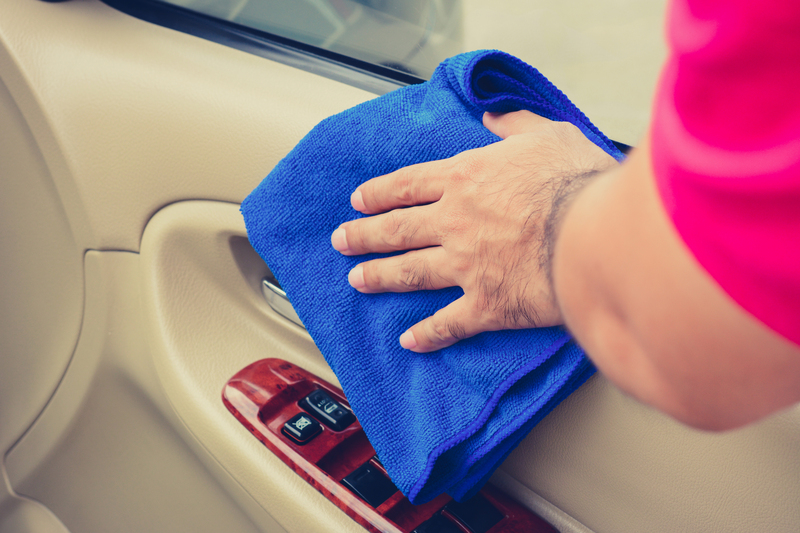Effective Ways to Stop Home Condensation
Posted on 21/05/2024
Condensation is a common issue that many homeowners face, especially during the colder months of the year. It occurs when warm air containing moisture comes in contact with a cold surface, causing water droplets to form. Not only can this lead to unsightly water stains and mold growth, but it can also create an uncomfortable and unhealthy living environment. Fortunately, there are effective ways to prevent and stop home condensation. In this article, we'll discuss the causes of condensation and provide tips on how to combat it effectively.
Understanding the Causes of Condensation
Before we dive into solutions for preventing condensation, it's important to understand its root causes. There are several factors that contribute to excessive condensation in homes, including poor ventilation, high humidity levels, and inadequate insulation.
Poor Ventilation: When there isn't enough air circulation in a home, moisture has nowhere to escape, leading to condensation. This is particularly common in rooms with limited airflow such as bathrooms and laundry rooms.
High Humidity Levels: Humidity refers to the amount of water vapor present in the air. When indoor humidity levels rise above 50-60%, it creates a perfect breeding ground for condensation. Cooking, showering, and even breathing can all contribute to increased humidity levels in a home.
Inadequate Insulation: Proper insulation plays a crucial role in keeping a home comfortable and free from condensation. Without proper insulation, cold surfaces like walls and windows can become significantly colder than the rest of the room. This temperature difference leads to condensation forming on these surfaces.

Effective Tips for Combatting Condensation
Now that we understand what causes condensation let's explore some practical ways to prevent and stop it.
1. Improve Ventilation: The first step in preventing condensation is ensuring adequate air circulation throughout your home. This can be achieved by opening windows or using exhaust fans in rooms with excessive moisture, such as bathrooms and kitchens. Investing in a dehumidifier can also help reduce humidity levels.
2. Monitor Humidity Levels: It's essential to keep an eye on indoor humidity levels to prevent condensation from forming. You can purchase a hygrometer, a device that measures moisture in the air, to monitor humidity levels in your home. If you notice consistently high levels, taking steps to reduce them can significantly decrease condensation.
3. Check for Leaks: Leaking pipes or roofs can contribute to excess moisture in your home, making it more susceptible to condensation. Regularly inspecting and repairing any leaks can help prevent condensation and other water-related issues.
4. Ensure Proper Insulation: As mentioned earlier, inadequate insulation is a significant cause of condensation. Make sure your home is adequately insulated, paying special attention to windows and doors. Adding weatherstripping or caulking around these areas can improve insulation and reduce condensation.
5. Use Proper Ventilation for Cooking and Showering: High humidity levels caused by cooking and showering can lead to condensation in your home. Always use the ventilation fans in your kitchen when cooking and turn on the exhaust fan while showering to remove excess moisture from the air.
The Pros and Cons
Pros:
- Improved air quality: By reducing moisture levels in your home, you'll also be improving the overall air quality, creating a healthier living environment.
- No more mold growth: Mold thrives in damp conditions, which means addressing condensation early on can prevent mold growth from occurring.
- Saves money: Preventing excess condensation not only saves you from potential health hazards but also saves you money on costly repairs due to water damage or mold remediation.
Cons:
- Initial costs: Some solutions for combating condensation may require an initial investment, such as purchasing a dehumidifier or installing proper ventilation systems.
- Requires consistent maintenance: Keeping humidity levels in check and regularly inspecting for leaks may require ongoing maintenance, which can be time-consuming.

Takeaways
- Condensation is caused by poor ventilation, high humidity levels, and inadequate insulation.
- Effective ways to prevent condensation include improving ventilation, monitoring humidity levels, checking for leaks, ensuring proper insulation, and using proper ventilation when cooking and showering.
- The pros of stopping condensation include improved air quality, no more mold growth, and cost savings, while the cons include initial costs and ongoing maintenance.
In Conclusion
Excess condensation in your home can lead to a range of issues, from unsightly water stains to mold growth. However, by understanding its causes and following some simple tips, you can effectively prevent and stop condensation. Keep in mind the importance of proper ventilation, monitoring humidity levels, and maintaining your home's insulation to create a comfortable and healthy living environment for you and your family. By taking these steps, you'll not only save yourself from potential problems down the road but also improve the overall quality of life in your home.








